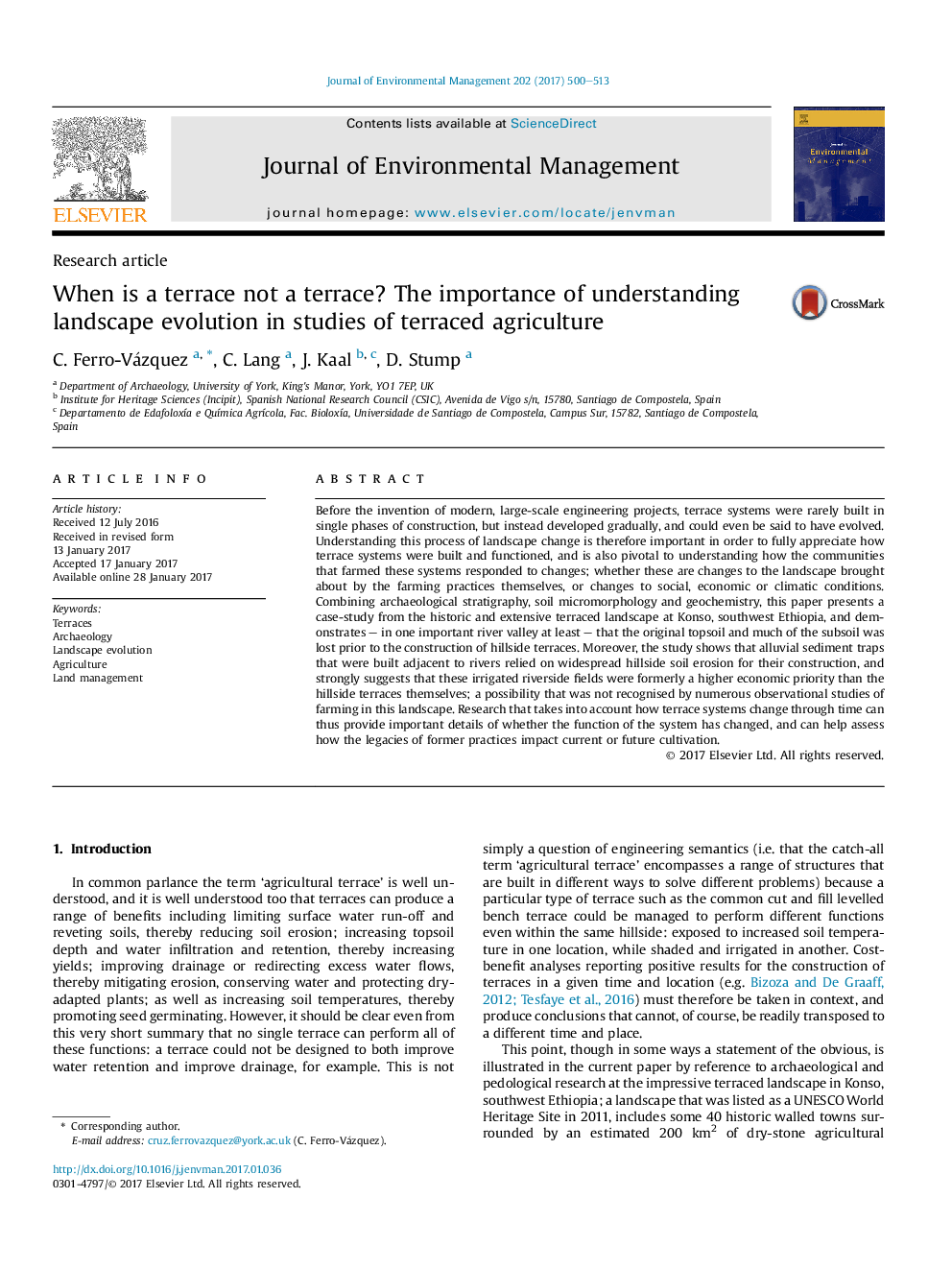| Article ID | Journal | Published Year | Pages | File Type |
|---|---|---|---|---|
| 5116868 | Journal of Environmental Management | 2017 | 14 Pages |
â¢The study combines stratigraphy, geochemistry, micromorphology and pyrolysis GC/MS.â¢Riverside fields were built by trapping sediment produced by hillside soil erosion.â¢Hillside terraces were built initially for protecting the valuable riverside fields.â¢Slope soil erosion has been an agronomic resource for system maintenance.â¢Understanding landscape evolution is essential for successful long-term management.
Before the invention of modern, large-scale engineering projects, terrace systems were rarely built in single phases of construction, but instead developed gradually, and could even be said to have evolved. Understanding this process of landscape change is therefore important in order to fully appreciate how terrace systems were built and functioned, and is also pivotal to understanding how the communities that farmed these systems responded to changes; whether these are changes to the landscape brought about by the farming practices themselves, or changes to social, economic or climatic conditions. Combining archaeological stratigraphy, soil micromorphology and geochemistry, this paper presents a case-study from the historic and extensive terraced landscape at Konso, southwest Ethiopia, and demonstrates - in one important river valley at least - that the original topsoil and much of the subsoil was lost prior to the construction of hillside terraces. Moreover, the study shows that alluvial sediment traps that were built adjacent to rivers relied on widespread hillside soil erosion for their construction, and strongly suggests that these irrigated riverside fields were formerly a higher economic priority than the hillside terraces themselves; a possibility that was not recognised by numerous observational studies of farming in this landscape. Research that takes into account how terrace systems change through time can thus provide important details of whether the function of the system has changed, and can help assess how the legacies of former practices impact current or future cultivation.
